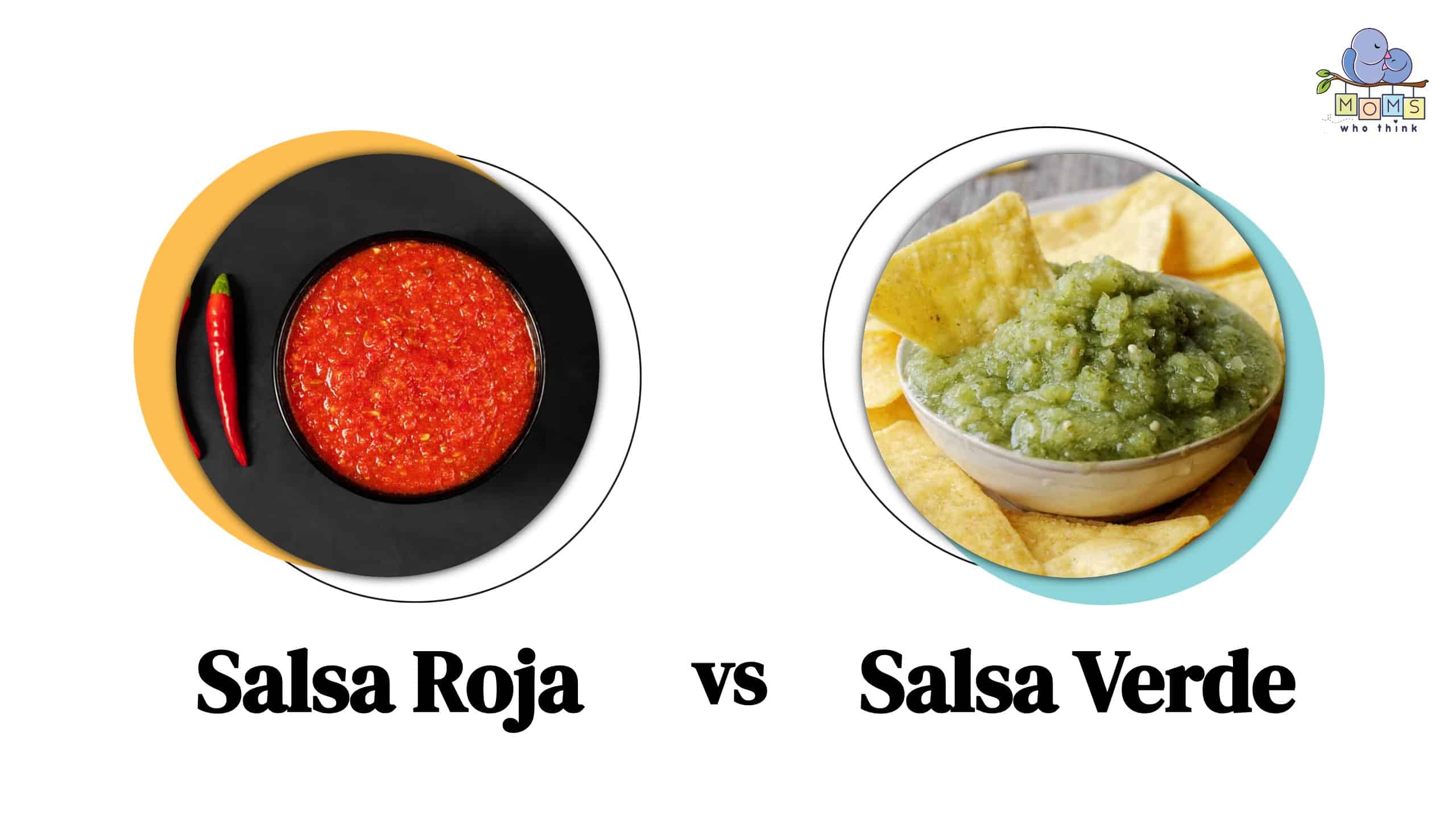When you sit down to eat at a Mexican restaurant, filling up quickly on your favorite chips and dips can be easy to do. Mexican cuisine is ripe with excellent flavors and delicious salsas that fill you up and satisfy your taste buds. If you are a fan of Mexican cuisine or even just salsa in general, you likely have heard of salsa verde and salsa roja. Even though these two salsas are loved sauces, there are important differences.
Are you asking yourself what is the difference between salsa verde and salsa roja? While both of them have the same ingredients, there are primary differences. This post will explore the differences and similarities between these two popular salsas and their various uses.
Are Salsa Roja and Salsa Verde the Same Thing?
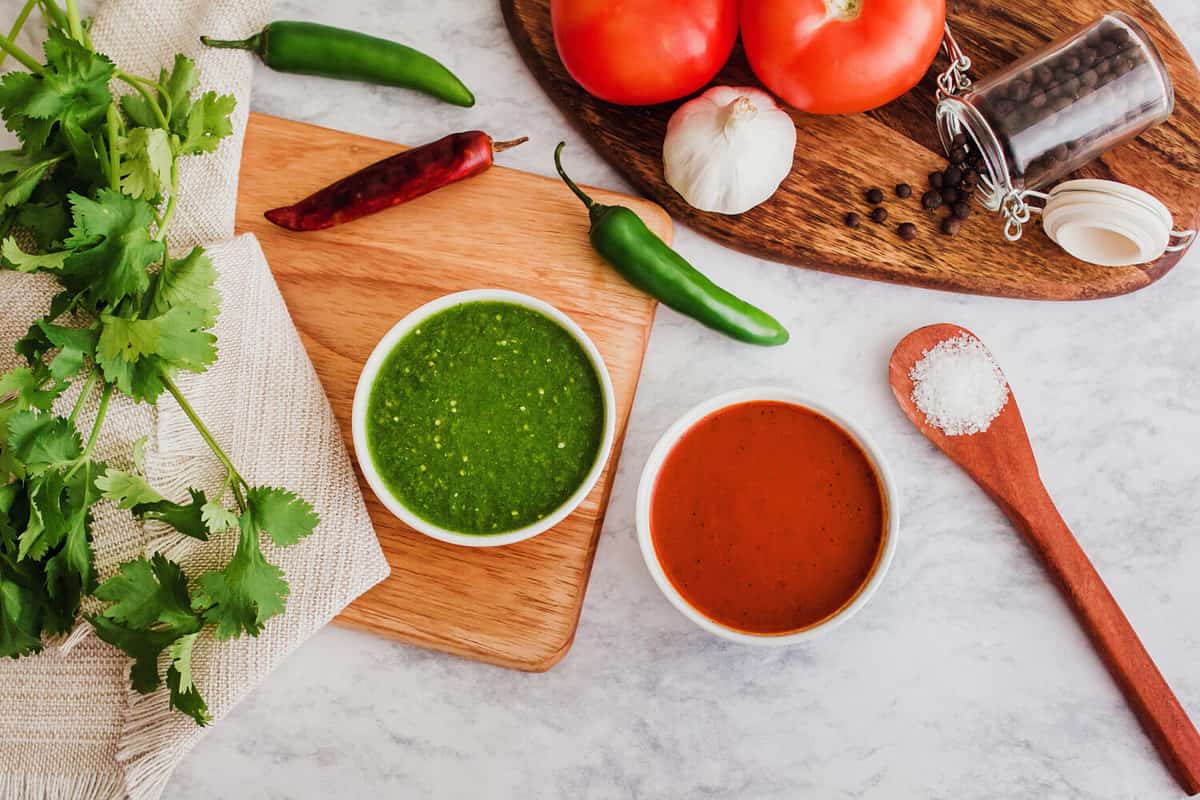
Salsa roja and verde next to each other with ingredients
©Marcos Castillo/Shutterstock.com
On the surface level, it is evident that salsa roja and salsa verde differ. For starters, one is green, and the other one is red. Known uniquely as green sauces and red sauces, it is difficult to mix the two salsas up. Nonetheless, do you know why there is a color difference? It all boils down to the base ingredient used to make these two salsas. Salsa roja and salsa verde use the same or similar ingredients, like fresh chilies and cilantro. The main difference lies in the base ingredient. The differing base ingredients contribute to the color and taste variations between salsa verde and salsa roja.
Salsa Roja vs. Salsa Verde: What Is the Difference?
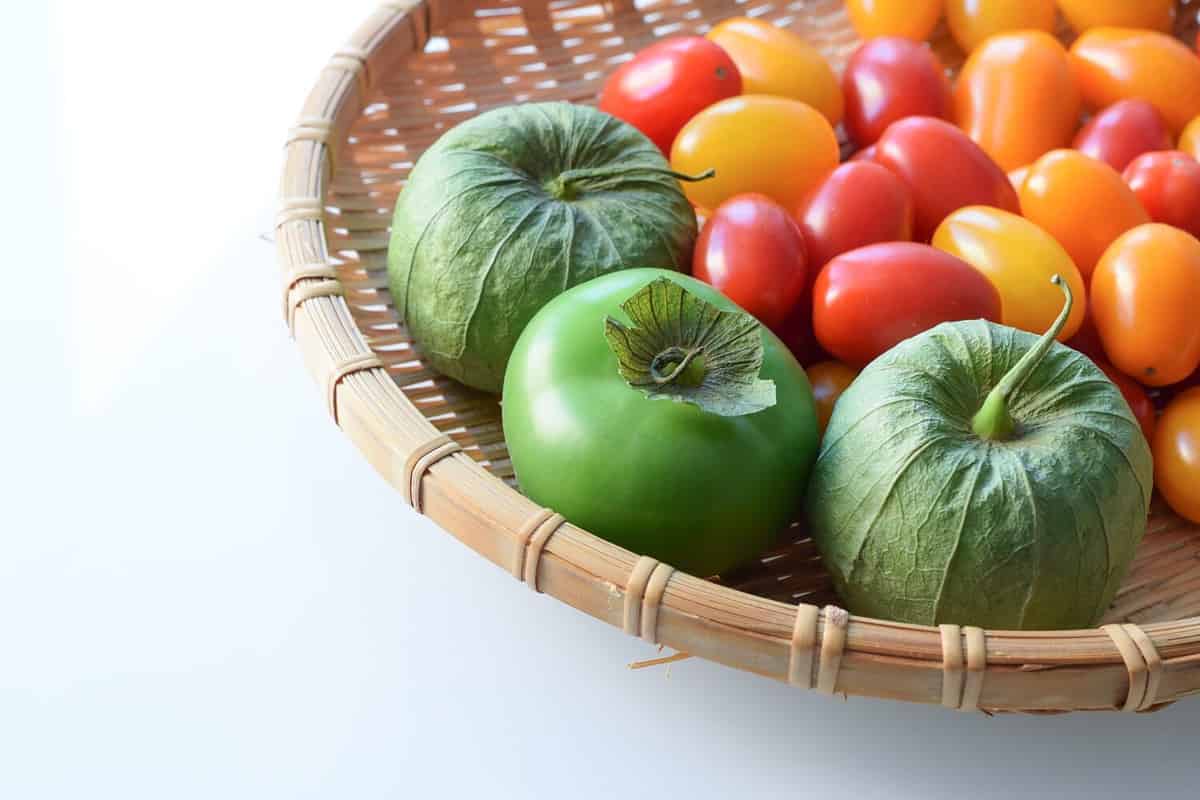
Salsa roja uses red tomatoes as the base ingredient. In contrast, salsa verde uses green tomatillos as the base ingredient.
©littlekiss photography/Shutterstock.com
The primary difference between salsa roja and salsa verde is that salsa roja uses red tomatoes as a base while salsa verde use tomatillos as a base. This ingredient difference gives salsa roja its red color and salsa verde its green color.
Since red tomatoes are sweeter than tomatillos, salsa roja has a sweeter flavor that's balanced with smokiness from roasted chili peppers. Salsa verde's flavor is often described as “tart” and fresh. This tartness comes from the higher acidity of tomatillos.
A common question is which salsa is hotter, and the reality is that both salsa roja and salsa verde have similar heat levels. It's added ingredients like chili peppers that determine which is spicier.
Salsa Verde vs. Salsa Roja Nutrition: Which is Healthier (Calories, Carbs, Vitamines)
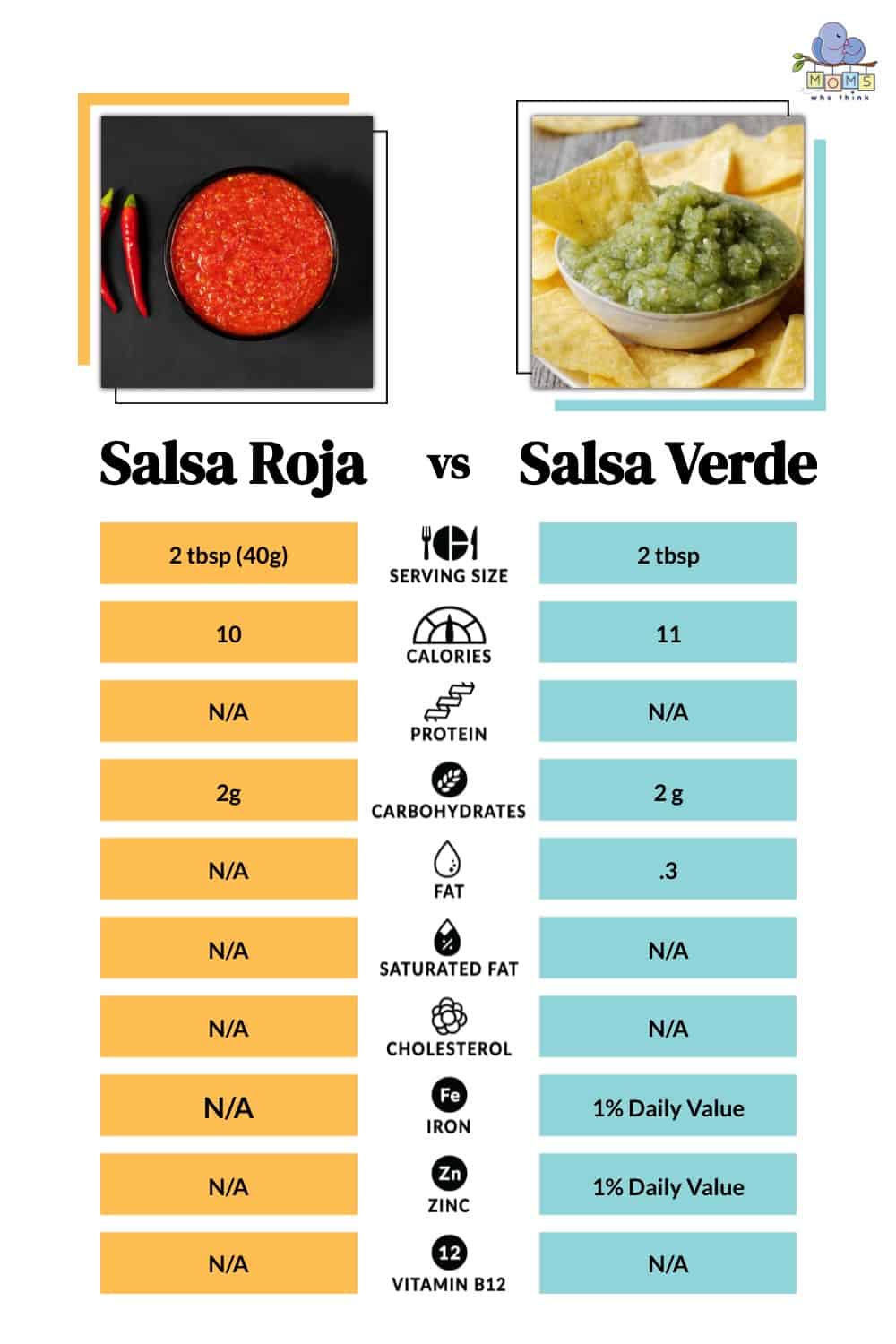
Regarding salsa verde and salsa roja, they are very similar in nutritional value. Both salsas offer low carbs and calories, making them tasty and colorful condiments to enjoy with your meal. Another one of the reasons salsa makes a great topping or dip to indulge in is because it has no saturated fats or cholesterol, meaning enjoying these salsas are great healthy choice!
However, paying attention to the sodium and sugar added to your favorite salsa brand is important because some salsas can contain a higher level. Overall, salsa roja and salsa verde are colorful and tasty salsas that are tasty as an appetizer or add-on to your favorite meal.
What is Salsa Roja?
What exactly is salsa roja? Salsa roja is a red sauce prominent in Mexican cuisine, and many people enjoy this salsa worldwide. You can find salsa roja in the supermarket, at many restaurants, and you can even make it at home. It is used as a dip or sauce for meals, including tacos or burritos. The taste of salsa roja can be sweet because of the tomato base. It also uses similar ingredients to salsa verde, including onions, peppers, cilantro, garlic, and lime juice. These ingredients can vary depending on the recipe used.
A Quick History of Salsa Roja
The history of salsa roja dates back to the Mayans, Incas, and Aztecs. Many people experimented with different combinations of chilies, tomatoes, and spices during this time. These sauces would add flavor and spiciness to bland food and meat. After the Spaniards arrived in Mexico in the 1500s, the name salsa was given to this sauce by a Spanish priest. Translated literally, salsa means sauce.
There are a few different ways to eat salsa. You can eat it cooked, roasted, or raw. Salsa is delicious when you cook the ingredients first and then grind them up. When you cook salsa ingredients beforehand, the flavor will be more concentrated. However, raw salsa allows you to enjoy the texture of the individual ingredients more.
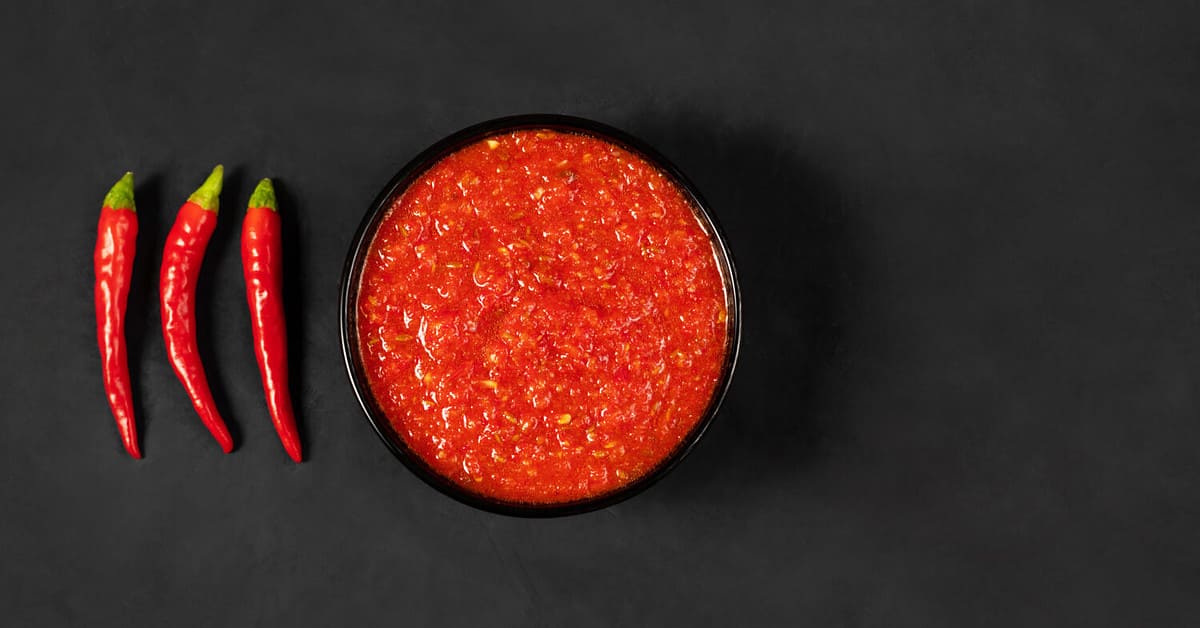
Red tomatoes tend to have a sweeter overall taste. However, salsa roja can be spiced up with hot chilies.
©miss.lemon/Shutterstock.com
What is Salsa Verde?
Salsa verde translates as a green sauce. The main base of salsa verde comes from the tomatillo. When people hear the word tomatillo, they immediately picture a green tomato. While tomatillos look very similar to green tomatoes, they are, in fact, different. The tomatillo is a fruit that has a husk around it. After you peel away the husk, you have a sticky and earthy tomatillo. When making salsa verde, the tomatillo is then chopped coarsely or placed in a blender and added to the rest of the ingredients to create salsa verde.
Often salsa verde is made with jalapeños, chilis, and cilantro. It has a tart taste and just enough kick for those who love the sharp flavor. Another use for salsa verde is as a topping for tacos, enchiladas, or a dip for corn chips. Like salsa roja, there are several ways you can eat this sauce. Many enjoy raw salsa verde and salsa roja for the textured flavor, while others enjoy pouring cooked salsa roja or verde over burritos. Either way is an excellent choice when enjoying these two delicious sauces.
A Quick History of Salsa Verde
Like salsa roja, the history of salsa verde dates back to the Aztecs and Mayans. The exact history is unknown. Nevertheless, the origin goes back to Mexico and has since become a staple in Mexican cuisine enjoyed worldwide. There are many variations of both salsas. Both salsas include ingredients from old cultures and have new cultural origins as well. Salsa verde is an excellent acidic salsa that adds unique color, flavor, and texture to your dishes. Salsa roja, on the other hand, is often enjoyed because of the sweetness that can be tasted. The tomatoes take center stage in salsa roja. You can buy both salsas at the grocery store in already premade jars. You can also make your own salsa, which is very simple, and in many cases, even better than store-bought.
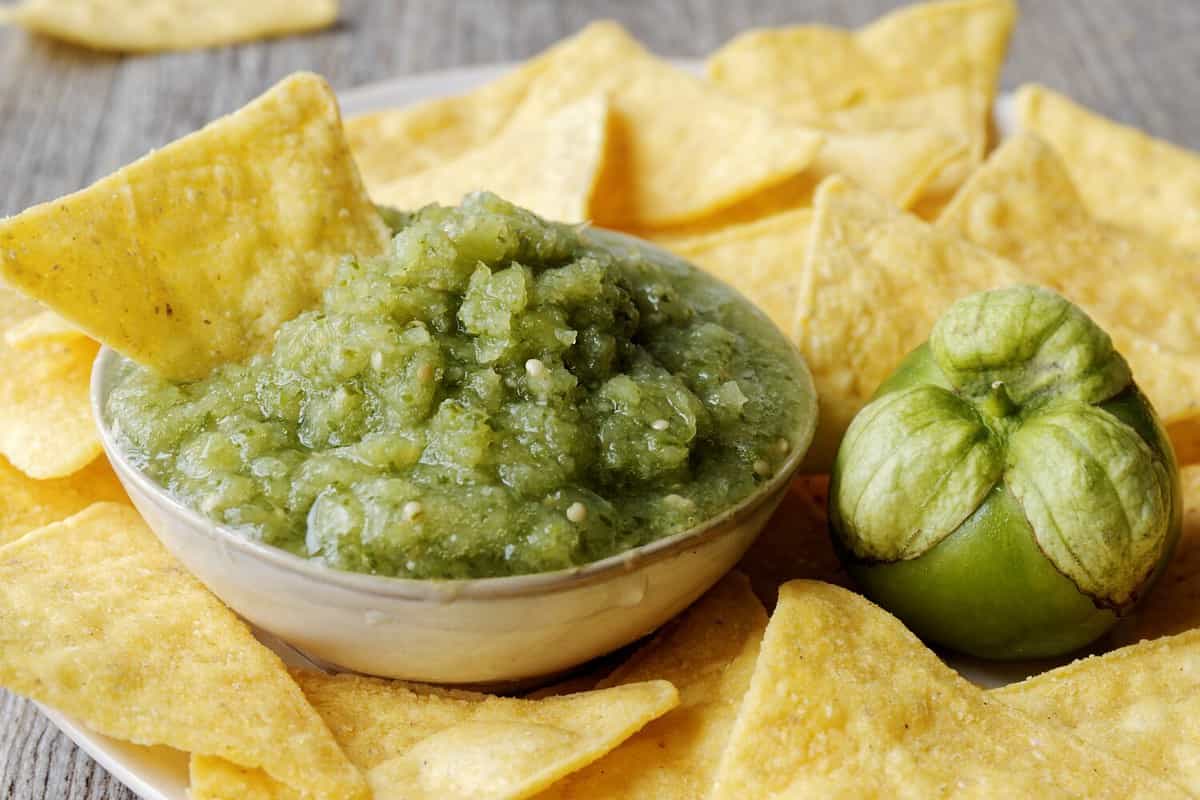
Salsa verde is delicious raw, and cooked. It is also a great topping for enchiladas and tacos.
©Fotema/Shutterstock.com
Can You Substitute Salsa Roja for Salsa Verde or Salsa Verde for Salsa Roja?
When it comes to salsas, it's all about personal preference. Salsa roja and salsa verde have the same ingredients typically except for the main base. You could substitute salsa roja and salsa verde if you are in a pinch. However, you will have to be prepared for both the taste difference and the color difference. The tomatillo in salsa verde adds a bright green color to your salsa. The red color in salsa roja is prominent because of the tomato base. Salsa roja also has a sweeter taste than salsa verde. In contrast, salsa verde has more of a sour flavor. If you prepare yourself for the color difference and the taste difference, then yes, you can substitute one for the other.
Conclusion: Is Salsa Roja Hotter than Salsa Verde?
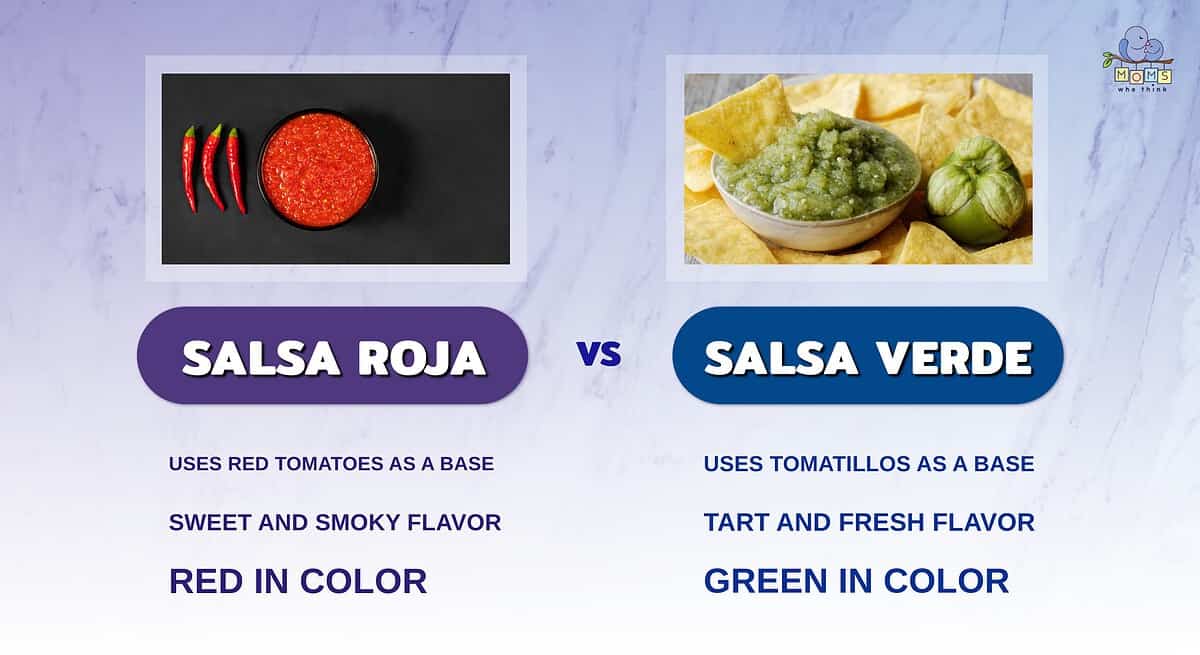
- Salsa roja uses red tomatoes as a base, while salsa verde uses tomatillos as a base. It's this difference in ingredients that causes the difference in color.
- Salsa verde tends to have a tart and fresh flavor; some even call it sour. Salsa roja, on the other hand, has a sweet and smoky flavor.
- Those who speak Spanish will recognize the color differences just based on the names of these salsas. Salsa roja is a vibrant red, while salsa verde is a pleasant green.
Let's talk about one last thing in this article. Heat. There is an ongoing debate about which salsa is hotter: roja or verde. The answer is: it depends. The heat does not naturally come from the base ingredients; tomatoes are not spicy, and tomatillos have an acidic and intense flavor but are less spicy than one may think. Instead, these two bases contribute to the sweetness or tartness of the salsa and the color. On the other hand, the heat comes from the chilies added to each salsa. Thus, having a salsa verde with more jalapeños will be hotter than salsa roja with less chilies or vice versa.
Both salsa roja and salsa verde are staples in Mexican cuisine that are delicious, add unique flavor, and brighten up dishes. You can use them as a sauce to dip your chips in or pour these salsas over your beef enchiladas or inside your tacos to enjoy. Salsa verde and salsa roja can also be great fish, chicken, and steak toppings. There are many diverse ways to enjoy these two delicious salsas. So, which salsa is your favorite?
Salsa Recipes
PrintCrispy Baked Salsa Chicken
- Yield: Serves 6
Ingredients
1 (12 count) box taco shells, each shell broken into pieces
1 bag (20 oz.) cubed, cooked chicken
1 packet (1.25 oz) taco seasoning
1 jar(16 oz) Medium Salsa
1/4 cup taco sauce (mild, medium or hot)
1 cup light sour cream
1 can (4 oz) diced green chiles
1 cup black olives, rinsed
1/2 cup finely chopped cilantro
4 cups Mexican blend shredded cheese, divided
1 cup low-sodium chicken broth
Instructions
1. Preheat oven to 350 F.
2. Coat a 9×13-inch baking pan with cooking spray.
3. Evenly sprinkle the broken chips into the baking dish and set aside.
4. In a large bowl, toss the chicken with the taco seasoning, making sure to coat each piece well.
5. In a medium bowl, combine the salsa, taco sauce, and sour cream. Stir in the chiles, olives, and cilantro.
6. Pour over the chicken and combine thoroughly.
7. Stir in 3 cups of the cheese and the chicken broth.
8. Pour the chicken mixture into the 9×13-inch baking pan over the broken taco shells.
9. Place into preheated oven, bake for 20 minutes. Sprinkle the remaining cup of cheese over the mixture and bake an additional 10 minutes.
- Cocoa Coffee Chicken with Salsa Mole Recipe (momswhothink.com)
- Chicken Enchiladas with Tomatillo Salsa (momswhothink.com)
- Steak Tacos with Cucumber-Avocado Salsa Recipe (momswhothink.com)
